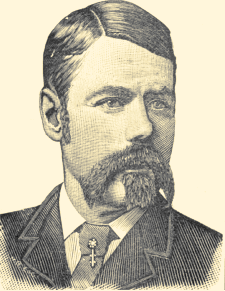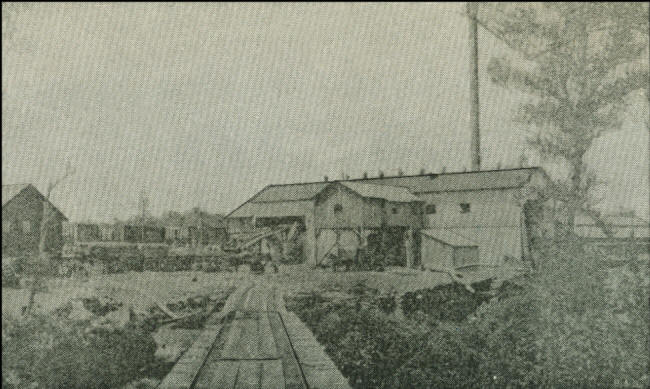|
|
|
Clark County Press, Neillsville, WI September 17, 1992, Page 28 Transcribed by Dolores (Mohr) Kenyon. Index of "Good Old Days" Articles
|
|
|
|
Clark County Press, Neillsville, WI September 17, 1992, Page 28 Transcribed by Dolores (Mohr) Kenyon. Index of "Good Old Days" Articles
|
Good Old Days
By Dee Zimmerman
Settlements in Clark County started in the southern portion and worked northward. First settlers in the area were loggers and lumbermen who went through cutting the valuable large pine timber.
The first of the townships boundaring the northern county line was Hixon. It was organized by act of legislature in the year 1873. It included the two townships west of it until 1880 when the town of Withee was formed.
In the beginning it was very sparsely settled until the railroad of Wisconsin Central came through the town. Soon after the railroad’s arrival some large lumber mills were built in the area. A railroad station was established in the central part of the town.
Areas where the land had been cleared, was where the first settlers developed farm sites. Manufacturing was confined to the manufacturing of timber products, principally lumber.
Several small streams, two large streams, the Black River and Popple flowed through the township. There was a stage line running from Neillsville through Christie, Greenwood, Hemlock and Longwood, ending at the Village of Withee. There was a large general store at Longwood where the post office was also located. It was owned and managed by Joseph Gibson. The postmaster was Mr. G. F. Lantz. The Longwood locality was the oldest part of the township.
The first and largest general store to be owned and managed in Withee was that of W. S. Tufts. Other businesses were another general store, a grocery/confectionery store, a hotel, a blacksmith shop and a saloon. There was a large lumber yard which was supplied by the mills along the railroad nearby. The large mills of D. J. Spaulding were located on the Black River, about two miles from the village.
The railroad’s existence through the township proved a great benefit. Building of mills and producing lumber was valuable asset to the township’s development.
In 1875, the population of the township was 260 and five years later was 500. In 1895, Mr. W. S. Tufts was postmaster of the Village of Withee. The chairman of the Town of Hixon was Wm. Mead, the clerk was C. W. Funk; treasurer, Philo Mead and assessor, Pat Sheehan.
The Town of Hoard was organized in March of 1889. Its first settlers were mainly of German and Norwegian descent.
It, too, had some large lumber in its first existence. The Village of Curtiss was started on the town line of Hoard and Mayville. A. D. Boss owned large mills in Curtiss. There were several stores in the village also, as well as a hotel, two or three blacksmith shops and other businesses. The population of Hoard and Mayville townships was 1750 in 1897.
During the summer of 1870, James Seneca Boardman moved from the southwestern plains of Minnesota, to the wooded area in northwestern Clark County. He located within the Withee area. At that time the nearest post office was twenty miles away (Greenwood) and his nearest neighbor lived ten miles from where he settled. Mr. Boardman moved his family and began clearing the land of trees, eventually enough to start a farm.
In 1871, Michael McCaffrey started building the first log house within the present site of Thorp. The first school house was built in 1874. From 1872 to 1875, several new settlers arrived. Names such as Clark, Boardman, Brown, Worden, McCann, Richards, Nelson, Courter, Douglas and Warner
Winneoka post office was established in 1874 with Bernard Brown as postmaster. Before that settlers had to receive their mail through Chippewa Falls and Greenwood. They packed the mail on their backs or “toted” on “jumpers” (a long rude sleigh used in summer and winter) all their provisions and mail.
In January, 1876, the county board, by an order that took effect April 3, 1876, organized the Town of Thorp (detaching it from Hixon).
In 1880, the new line of Wisconsin Central railroad from Abbotsford to St. Paul began. The first freight and passenger train ran over the new line later that year. That opened the development of Thorp and the farm land around it. Near Thorp, two other villages developed Sterling and Eidsvold.
During the late 1890’s the combined population of Thorp, Eidsvold and Sterling was 2,700. Thorp village had three saw mills, two hoop factories, one wagon factory, one large barrel and excelsior factory, one grist mill, one harness shop, two hardware, five general stores, two millinery stores, six saloons, two drug stores, one each of Catholic, Baptist and Methodist churches. Also, there were the physicians, one attorney, two brass bands and three hotels.
The cleared land revealed black loan top soil with clay and gravel sub-soil. Small grains, corns, potatoes and Timothy as well as garden vegetables were products of the new farmland. Eventually, dairying started with the production of cheese and butter.
As well, sawmills and a stave factory provided a cash crop for many farmers. The York Iron Company had sixteen coal kilns in Thorp which provided employment.
The northern towns/townships grew rapidly after the railroads entered the area.

Mr. Sterling was a native of Maine. He first arrived in Black River Falls in 1856, staying there until 1871. He moved to Clark County and worked with the Eau Claire Lumber Company for eighteen years. Starting in 1888, he owned one-third interest in the company and managed the Sterling Lumber Company in Northwestern Clark County. He also owned a 180 acre well stocked farm, plus other real estate in the county.
 |
The Sterling Lumber Company in this photo reveals the size and capacity of the mill in the 1890’s. Its’ value at that time was $200,000 and produced cuts of 120,000 feet in twenty hours. It was managed by Joseph R. Sterling who owned one-third interest in the business. About 120 men were employed in the saw mill and planing mill. The mill was built in 1881. The firm also owned a hotel and fifteen tenement houses in Sterling. (Sterling was located between Thorp and Withee on Old Hwy. 29 now County X.)
¤¤¤¤¤¤¤¤¤¤¤¤¤¤¤¤¤¤¤¤¤¤¤¤
Compiled by Terry Johnson
SEVENTY FIVE YEARS AGO – 1917
“The season for hunting migratory waterfowl in Wisconsin opens September 7…. The law provides a daily bag limit of fifteen wild ducks, including American coot or mudhen…. There is a permanent closed season on wood duck, and quail, and a closed season on prairie chicken, partridge and grouse until the fall of 1919.”
“F. L. Reinhardt and Leo Miller went to Minneapolis Tuesday to drive home a couple Chevrolets.”
“Robt. Kurth, Geo. Ure, Hm. Korman, Carl Rabenstein, Otis Slocumb and Aug. Dankenmeyer went to Chicago yesterday to investigate the new vegetable drying apparatus and watch it in operation.”
“Ready to cut cabbage: The canning factory is now ready to take in cabbage and growers who have early varieties which are ripe are urged to cut them out of the fields and bring them in. The late cabbage can remain in the fields for a while longer. Deliver cabbage at factory at anytime.”
In a very complete account of the county fair, which that year ran the first week in September, it was stated that: “The feature that was particularly notable was that it was not a local fair in any sense of the word, for it had the united support of every section of the county.”
Nels Darling had begun a front page series called “The Home Town,” which was meant to encourage support of the local community and its businesses.
SEVENTY-FIVE YEARS AGO – 1917
Compiled by Terry Johnson
Hewett: “Several from here attended the dance at Columbia Saturday night.”
North Pine Valley: “The Carl boys went to Camp Douglas in their car Sunday to see their brother Gus who is with Co. A.”
Dells Dam: “The Levis Sewing circle will meet with Mrs. John Apfel Thursday, September 13. Come early and bring your darning needles and have a good time.”
Columbia: “Several of the men from here went to Neillsville to attend the drainage hearing Monday.”
North York: “M. C. Rondorf has been digging out the cellar for a new school house in Dist. No. 1…. School begins in Dist. No. 1, September 10 with Miss Gertrude Rogers of Ladysmith as teacher.”
Tioga: “Threshing is the order of the day at Tioga now, as several of the farmers have raised oats and barley this year. The frost last week killed about 8 acres of corn, some buckwheat and beans at John Swanson’s, which he valued at about $300, had it ripened.”
Globe: “Oswald Pischer and wife and Ed Hillard and wife autoed (drove) over from Granton Sunday and surprised Mrs. G. Mallig on her birthday. L. Kalsow and family, Gus. Grap and family and Mrs. Geo. Bruley also enjoyed themselves there. A nice supper was served.”
Pleasant Ridge: “Anita Kuechenmeister started for college at Winona Monday.”
FIFTY YEARS AGO – 1942
Compiled by Terry Johnson
Whatever happened to Columbia? The September 1 , 1942 issue of the Clark County Press carried this news: “Last Vestige of Columbia Vanishes.” Mrs. William Sollberger reported, “The one remaining building that was used as a business place in Columbia has been sold to Herman Embke, who is busily engaged in tearing it down. This structure was built by a man named Copley in about 1896-97. He operated a store and also lived in the building. A number of people living here now recall when the building was erected. Since then the store has been operated by numerous individuals, but finally became only a dwelling place.
Mrs. Sollberger’s report continued, “Mr. Embke has also purchased the garage which was built by August Schlender, when he conducted a business establishment in Columbia, a number of years ago. This building will also be razed and the material from both buildings taken to Mr. Embke’s farm, where he intends to use it for a poultry house. Mr. Embke made both purchases from William Sollberger, who owned the buildings. With the Columbia lots vacated, the removal of the depot and the switch track, and the razing of these two buildings one can truly say that Columbia is a ‘ghost’ town and has finally vanished into the past.”
|
© Every submission is protected by the Digital Millennium Copyright Act of 1998.
Show your appreciation of this freely provided information by not copying it to any other site without our permission.
Become a Clark County History Buff
|
|
A site created and
maintained by the Clark County History Buffs
Webmasters: Leon Konieczny, Tanya Paschke, Janet & Stan Schwarze, James W. Sternitzky,
|